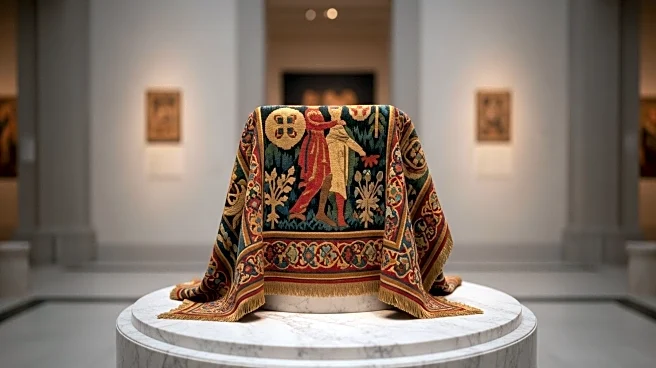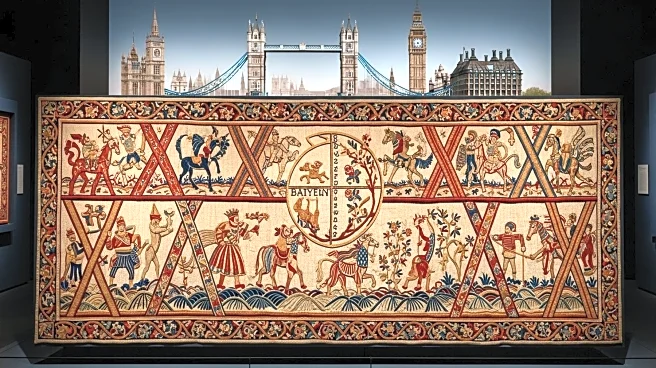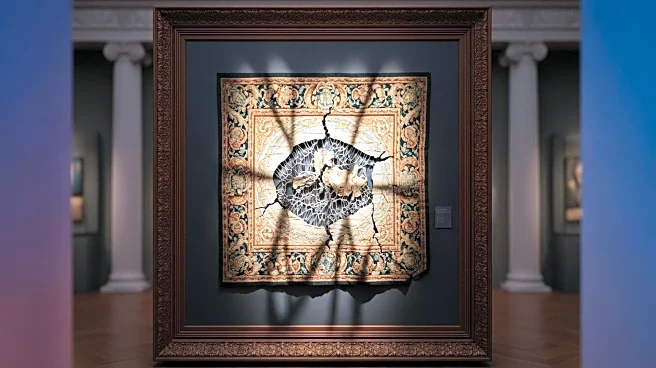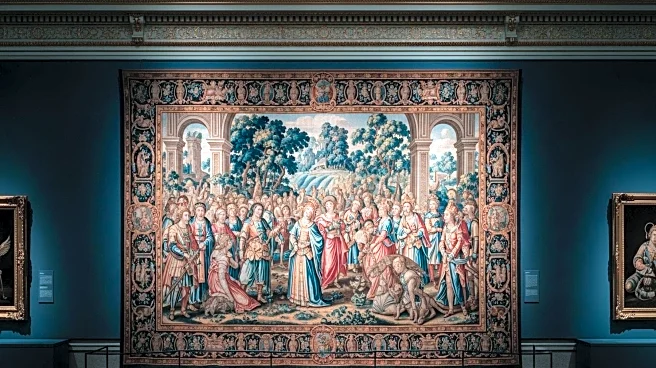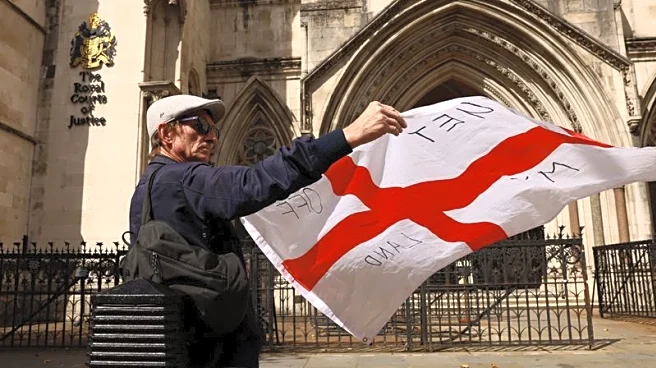What's Happening?
The Bayeux Tapestry, a nearly 1,000-year-old artwork documenting the Norman invasion of England in 1066, is set to be loaned to the British Museum in London. This decision, announced by French President Emmanuel Macron and British Prime Minister Sir Keir Starmer, has sparked significant opposition within the French art community. Critics argue that the tapestry is too fragile to endure the transportation required for the loan. The tapestry will be closed to the public in France starting September 1, as preparations for its move begin. A petition against the loan, describing it as a 'cultural crime,' has garnered 60,000 signatures, reflecting widespread concern over potential damage during transit.
Why It's Important?
The loan of the Bayeux Tapestry represents a significant cultural exchange between France and the UK, highlighting diplomatic relations through art. However, the opposition underscores the tension between cultural diplomacy and preservation concerns. The tapestry is a vital piece of historical art, offering insights into medieval life and military traditions. Its potential damage could result in the loss of invaluable historical information. The controversy also reflects broader debates on the responsibilities of nations in preserving cultural heritage, especially when such artifacts are shared internationally.
What's Next?
The tapestry is scheduled to be displayed at the British Museum starting September next year. In the meantime, French officials will oversee its preparation for transport, addressing concerns about its fragility. The French art community may continue to voice opposition, potentially influencing future decisions on international loans of cultural artifacts. The construction of a new display area for the tapestry in France will proceed, ensuring its preservation upon return.
Beyond the Headlines
The debate over the Bayeux Tapestry's loan raises questions about the ethics of transporting fragile historical artifacts. It highlights the balance between cultural diplomacy and the preservation of heritage. The situation may prompt discussions on establishing international standards for the loan and transport of delicate artworks, ensuring their protection while fostering cultural exchange.
